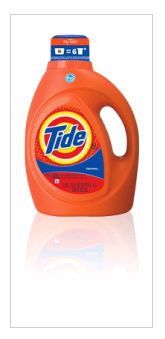Laws that prevent trademark infringement are primarily consumer protection statutes. Their purpose is to prevent consumers from being confused or misled in the marketplace. If a consumer reaches for a Tide® detergent, he should know what he is getting. Not that it is the best or the worst detergent available. And not even the fact that it comes from Procter & Gamble.

The trademark tells him that this bottle includes the same detergent that he bought last time, because both bottles came from a single source and that source controls the quality of the product.
Although courts look at a number of factors in determining whether a trademark infringes, the most important considerations are the degree of similarities between the two marks (senior mark and junior mark) and the degree of similarities between the goods (or services) with which the marks are used.
But what about cases where a junior market player begins to use a senior mark, but there is arguably no consumer harm because no one believes that the junior user's products come from the same place as the established user's products? Most commonly, this occurs where the new products are so completely different from the products that consumers have come to associate with the senior mark that confusion about source is unlikely. Does a trademark owner still have an avenue for relief?
Trademark dilution law provides a remedy for trademark owners in certain limited circumstances. (See Federal Trademark Dilution Act, 15 U.S.C. § 1125(c)). First, in order to stop non-confusing use of a mark, the senior mark must be famous - really famous. According to the statute, in order to avail itself of trademark dilution protections, it is a prerequisite that the mark be "widely recognized by the general consuming public of the United States" and although courts have been inconsistent in its application, this language has been held to require trademark recognition by upwards of 70% of U.S. consumers – in other words dilution protection is available only to the "super marks."
Second, use of the junior mark (newcomer) must be "likely to cause dilution of" the senior mark. Dilution may occur by weakening or tarnishing the famous senior mark. Dilutions by blurring lessens the distinctiveness of the senior mark, while dilution by tarnishment is defined as use that harms the reputation of the famous mark.
These cases are hard to prove and dilution claims are far less common than trademark infringement claims. Mattel prevailed in its claims that its SEE N' SAY mark used in connection with toys was famous and was diluted by use of an identical mark by a later comer. Victoria Secret was ultimately successful in showing that the mark VICTOR'S LITTLE SECRET used to sell, among other things, sexually explicit merchandise was likely to tarnish its famous VICTORIA'S SECRET mark before the Sixth Circuit.
In most cases where dilution claims succeed, they are buoyed by very strong infringement and/or counterfeiting claims and often carry a strong dose of intentional "bad" conduct.
"Strong marks always win" is a mantra sometimes used by trademark lawyers, and nowhere is it more true than in the arena of trademark dilution law.
Since the teams have just been set, it only seems
appropriate that we show you one of our favorite Tide
Super Bowl commercials:
The lawyers at Trademarkology provide trademark registration services backed by the experience and service of one of the nation's oldest law firms. Click here to begin the process of protecting your brand name with a federally registered trademark.
The content of this article is intended to provide a general guide to the subject matter. Specialist advice should be sought about your specific circumstances.
